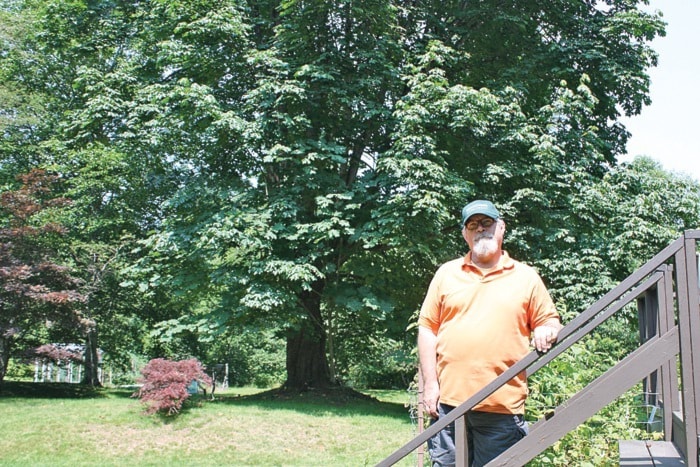The city and Greenways Land Trust need help creating an inventory of Campbell River’s many trees.
To engage the public, the local environmental organization is running a Character Tree contest inviting the community to nominate its favourite trees.
The trees, which must be within the city limits (including Elk Falls), will go head-to-head in a contest that will showcase some of the the city’s most beautiful assets.
Richard Hamilton, past president and secretary-treasurer of Greenways Land Trust, says taking an inventory of the trees is a vital part of the city’s Urban Forestry Management Plan which Greenways has partnered with the city to help create over the last year. The contest will help fill in the blanks.
“The tree inventory is based on sample plots and statistical analysis which will tell us about the tree cover in the community but not about (unique) trees that the urban management plan should know about,” Hamilton says. “The contest is to get people to become aware of trees in the community and nominate trees in town they think are important, from the big Douglas firs in Elk Falls park to the great Sitka spruce along the Quinsam Trail.”
Hamilton also wants to get people thinking about the important role trees play in providing shade to cool down in the summer and shelter for warmth in the winter.
Hamilton says one tree in particular, the cottonwood, has unfairly been given a bad name.
“A lot of people think it’s a nuisance but they’re an important tree,” he says. “They retain a lot of carbon because they grow so big and they’re important stream-side because they provide so much shade and they eventually fall into the stream and create woody debris.”
That wood then creates shelter for young fish which need cool water and sheltered areas to survive.
Other eye-catching trees found in the city include the arbutus tree, known for its slim, light-coloured, crooked trunk that divides into several twisting branches, and the Monkey Puzzle tree native to New Zealand.
The Monkey Puzzle tree’s thick evergreen branches that spread out in different shapes like puzzle pieces make it unique and popular among Campbell Riverites.
“It’s an unusual tree because it’s such an old genus of trees,” says Hamilton who recalls hearing from several upset local residents when the Monkey Puzzle tree along Highway 19A, just north of Hilchey Road, blew down in the March wind storm.
“Many people said to me that that was their favourite tree,” Hamilton says. “It’s been a landmark for a very long time.”
The good news, says Hamilton, is there’s lots of other Monkey Puzzle trees around.
He said the exotic tree can be found on Greenwood Street, in Coronation Park along Alder Street, and on Colwyn Street, between 6th and 7th Avenue.
Hamilton figures the Monkey Puzzle tree will likely be a popular choice among contest participants, as will the big-leaf maple trees (one can be found at Haig-Brown House).
The contest runs now until August 31 when a panel of expert judges will consider all the nominations. Four prizes in each of nine categories will be awarded during the Haig-Brown Festival near the end of September. The categories are: Best timber tree (Douglas fir, Western red cedar, etc.); Tallest tree; Most massive tree (estimated volume of wood); Best exotic ornamental or botanical (Monkey Puzzle, flowering chestnut, etc.); Best native ornamental (arbutus, etc.); Historic tree (St.Ann’s oak, sequoia in Sequoia Park, etc.); and Story tree in which the entrant writes a story in 500 words or less explaining the importance of the tree.
Each entry should have two photos of the nominated tree – one close enough to fill the frame and a second from a distance to show the tree’s setting.
For those unable to decide which category their tree belongs in, Greenways suggests taking a best guess and the expert panel will help if the category is incorrect. For entry forms and more information visit the Greenways website, www.greenwaystrust.ca
